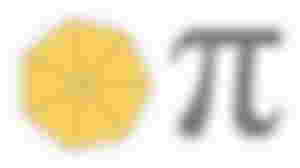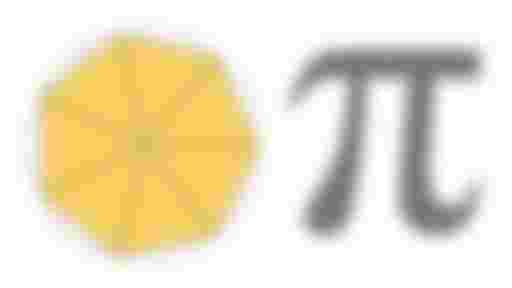Hey friends.. How are you? I am well..
What are you doing now..?
I am writing about a important things
# Pi_katha
#Pie_days
The more mysteries there are in the world, the more people are interested in them. Similarly, I get a mathematical symbol surrounded by a mystery (7). About 4,000 years ago today, the Egyptians first started working with (π) and it is thought that they knew the use of pie at that time. Since then, the current mathematician Pipasura has been researching with equal interest (π). The importance of pie in mathematics is immense. Pie's Day is celebrated on March 14 every year with a value of 3.1416. Pie (π) Day is sometimes celebrated on March 14 at 1:59 p.m. That is why 1:59 pm on that day is called pi minute.

We know that pi is a constant number, dividing the circumference of a circle by its diameter gives the value of pi. Its value is 3.142857 .... We all probably know so much information. But there are some people who are not so calm, they have taken the value of memorizing the value of (6) to the level of world record. In 2006, Akira Haraguchi, a retired Japanese engineer, claimed that he could tell the value of a million homes. However, this claim has not yet been tested by Guinness World Records. The Guinness Book of World Records has 67,890 houses owned by Lu Chao, a 24-year-old Chinese graduate student.
But how was the value of this (π) discovered? This question comes to our minds.
Papyrus is known to have been used by the ancient Egyptians about 4,000 years ago. They used the value of pie.
In 250 BC, Archimedes first attempted to determine the value of pi in a geometric way. He does, however, express it through mathematical inequality without determining the exact value of pi, (223/71 <π <22/7). But this value of Archimedes was much accepted.
Archimedes, with the help of two regular polygonal fields, used the Pythagorean theorem to determine the approximate value of the area of a circle. The polygons were in the middle of the circle and the circle was blocked in the middle of the polygon. Since the actual area of a circle contains any value between the intermediate part and the part bounded by the circumference, the regions of the polygons were actually pointing up and down the boundaries for the area of the circle. Archimedes knew that he did not find the value of তবে but only determined an approximate value within these limits. Thus, Archimedes showed that the value of is between 3 1/7 and 3 10/71.

There is an interesting story about the value of Archimedes (7), he was so busy determining the value of pie that he did not notice his country Greece, which was invaded and occupied by the Romans. A Roman soldier entered his house and saw that he was still researching the pie. "Don't disturb my circles," he said angrily to the soldier. Then the soldiers killed him. Archimedes died trying to determine the value of pie. It is also a tragedy. But from this, people's interest and madness about pie is revealed.
Ptolemy, the father of trigonometry, later used 3.141666 as the value of pi in 150. It is unknown at this time what he will do after leaving the post.
The Chinese mathematician and astronomer Xu Changzhi (429-501) followed a similar approach to Archimedes. Since his book is lost, little is known about his work. This is a very sad thing. He calculated the value of the ratio of circumference and diameter of a circle as 355/113. But in order to calculate that accurately, he probably started with a regular 24,576-angle and was able to calculate complex and long hundreds of square roots up to 9 decimal places.
Al Kharezmi, the father of algebra in Arabia in the eighth century, began to use 3.1416 as the value of pi.
In 1665 Sir Isaac Newton determined the value of pie and found up to 16 cells after the decimal.

Relevant mathematicians began using the Greek letter "π" in the 1700s. Leonard Euler popularized the use of the symbol after William Jones introduced it in 1706, and adopted it in 1737. Georges Buffon, an eighteenth-century French mathematician, came up with a way to calculate "π" based on probability.
In the present computer age, it is possible to find the value of pi (π) up to trillion cells. But pi is an irrational number so its value will never end.



I am fine and you?